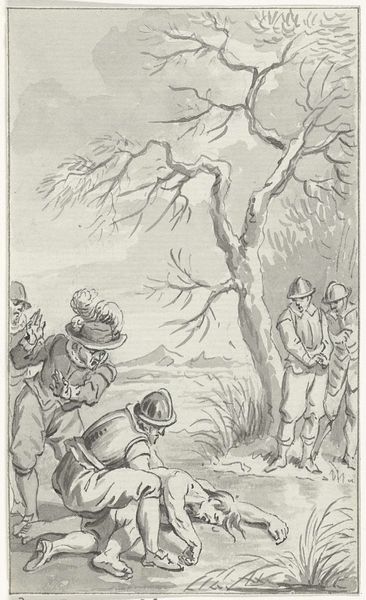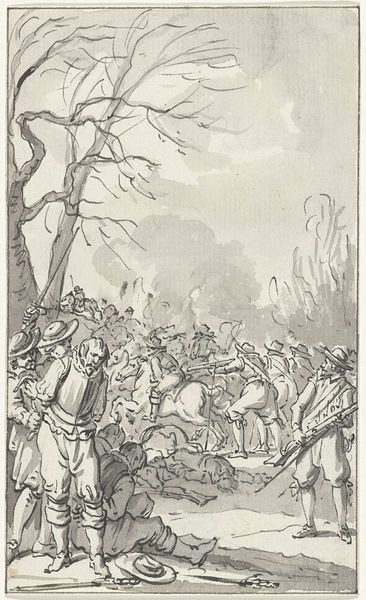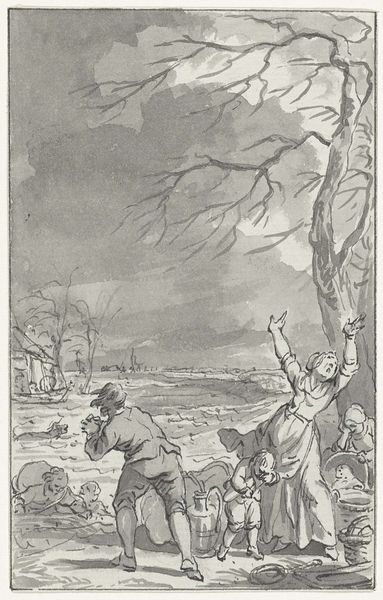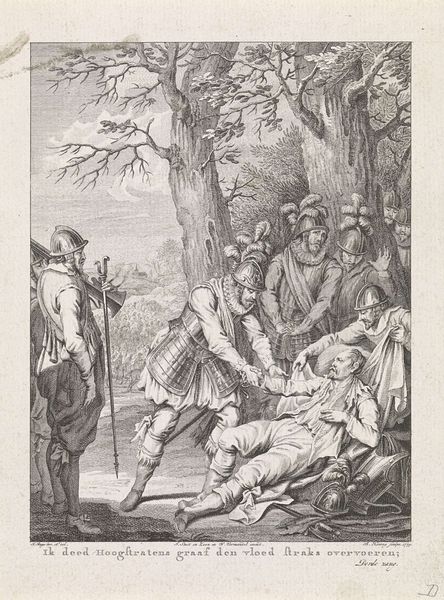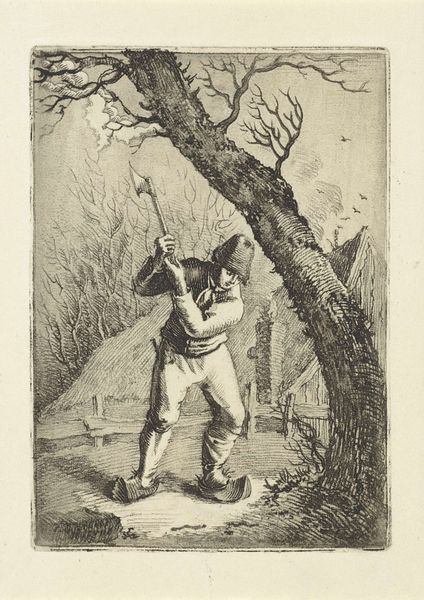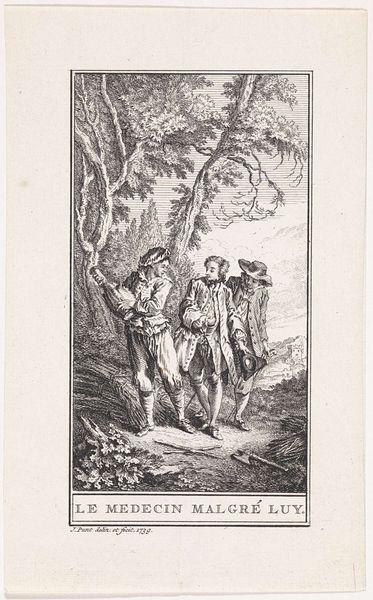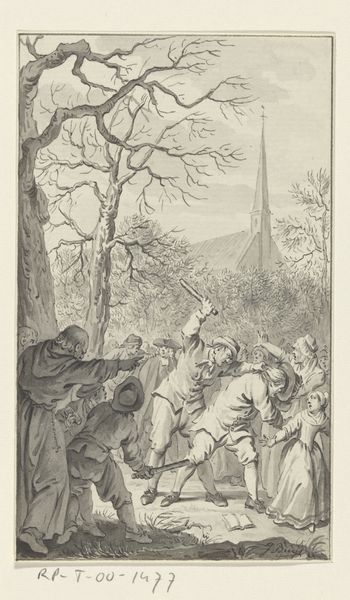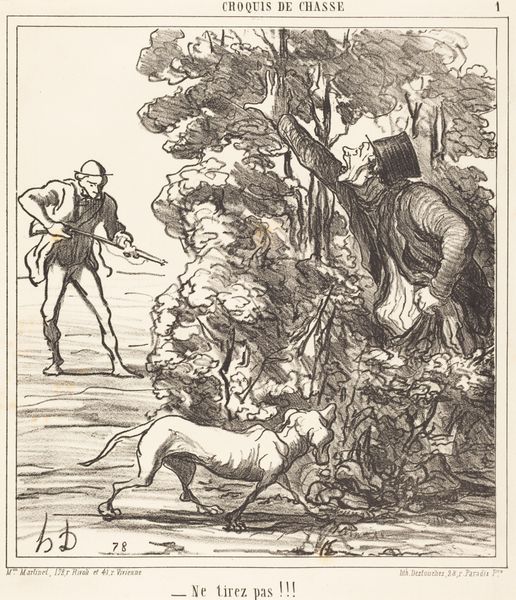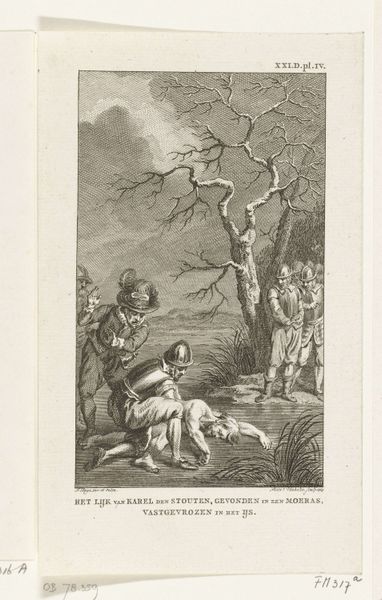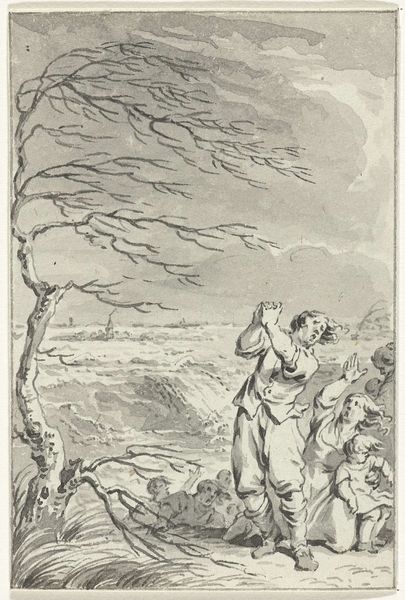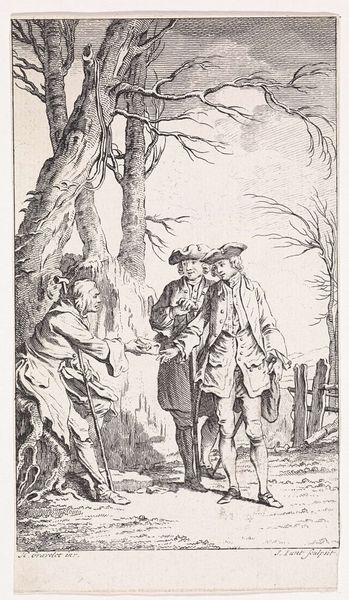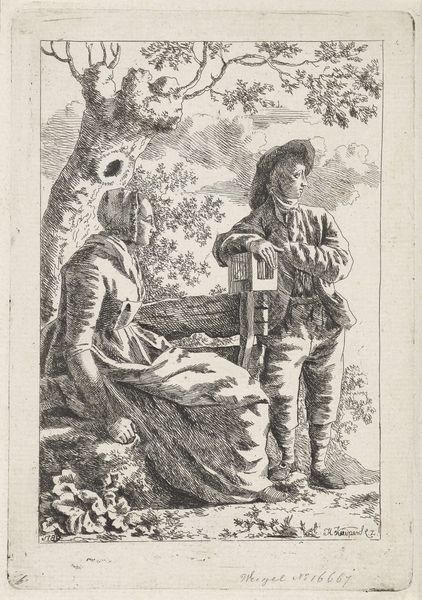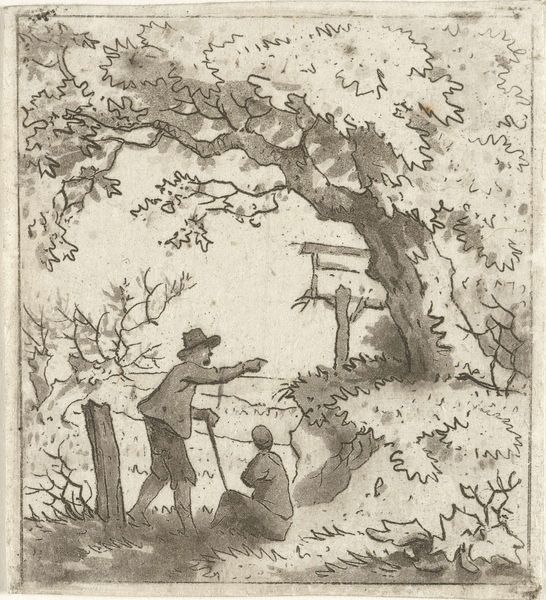
Het vinden van het lijk van Karel de Stoute in een moeras, vastgevroren aan het ijs, 5 januari 1477 1787 - 1789
0:00
0:00
Dimensions: height 149 mm, width 90 mm
Copyright: Rijks Museum: Open Domain
Editor: So, this ink and pen drawing by Jacobus Buys, titled "Finding the Body of Charles the Bold," dates from around 1787-1789. It’s incredibly bleak, with the harsh lines emphasizing the stark reality of the scene. What stands out to you when you look at this piece? Curator: What I see is an artwork reflecting the growing interest in historical narratives and the "sublime" in the late 18th century. The drawing depicts a moment of profound political and personal tragedy, the discovery of Charles the Bold's frozen body after the Battle of Nancy. Think about the socio-political implications of portraying a fallen ruler like this – what message do you think it sends? Editor: Perhaps a cautionary one? It’s certainly not glorifying war. The focus is on the ignominy of death, rather than any heroism in battle. The bleak landscape amplifies that feeling. Curator: Precisely! This artwork underscores how history paintings, even in drawing form, became tools for reflecting on power, mortality, and the human condition. It invites viewers to contemplate not only the events themselves, but also the lessons they hold for the present. Were you familiar with Charles the Bold before seeing this work? Editor: Only vaguely. Knowing this is a specific historical moment changes my perspective. It makes me think about how artists choose which events to depict and how they shape our understanding of history. Curator: Exactly. Buys uses the dramatic possibilities inherent in Romanticism to make a statement on the vicissitudes of fate and power. It’s a piece ripe with political implications wrapped in historical clothing. Editor: I hadn't considered the political aspect so directly. Seeing art as active commentary, shaping public memory… that's a new layer for me. Curator: Indeed, history is rarely neutral, especially in its artistic representation. Considering art as active dialogue really opens your eyes to what's truly happening. Editor: I'll definitely look at historical pieces with a more critical eye from now on! Thanks!
Comments
No comments
Be the first to comment and join the conversation on the ultimate creative platform.
